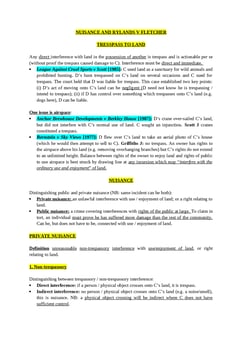Judgement for the case Page v Smith
KEY POINTS
Reasonable foreseeability on a possible physical injury is sufficient to establish liability, even if it does not actually occur.
Liability for physical injury is determined by the defendant's reasonable foreseeability prior to the event. Negligence should not exempt liability for psychiatric harm solely because serious physical injury did not actually occur, if it was foreseeable.
FACTS
Mr. Page was driving his Volvo car when Mr. Smith, driving a Datsun car, cut across into a side road, causing a collision. No bodily injuries were sustained by either party or their passengers.
However, Mr. Page had been experiencing a chronic fatigue condition, and had suffered a severe attack in the past. He took legal action against Mr. Smith, seeking damages for personal injuries resulting from the accident.
JUDGEMENT
The court ruled in favour of Page, stating that he was a primary victim.
COMMENTARY
The case presents the complexity of assessing liability when psychological distress is the main claim, particularly in motor accident scenarios. The judgement navigates the delicate balance between allowing compensation for genuine mental suffering while preventing an influx of claims for less severe psychological distress.
ORIGINAL ANALYSIS
Plaintiff’s car was hit by that of Defendant who was driving carelessly. This made a pre-existing condition of Defendant’s so chronic that he would never again be able to have full-time employment, despite not sustaining physical injuries.
HL allowed Plaintiff’s appeal and said that provided that “personal harm” was reasonably foreseeable, it was irrelevant whether the harm was psychiatric or physical.
The important distinction is between “primary and secondary” victims, with the various controls coming into place where secondary victims are concerned.
Lord Lloyd (endorsed by the majority)
To require foreseeability as to the specific type of injury (e.g. psychiatric rather than physical) leaves too much down to moral luck.
Suppose Plaintiff broke his finger and it was held to be a foreseeable consequence from the way Defendant was driving - is it fair that because Defendant could be liable for the lesser harm he causes but not the greater harm purely because of categorisation? Defendant “takes his victim as he finds him”.
Secondly, the distinction between psychiatric and physical harm is dodgy. He also says that the “reasonable person (Plaintiff)” is only required in secondary victim cases for the sake of limiting no. potential plaintiffs. This doesn’t apply to primary plaintiffs. No danger of floodgates because proximity still has to be proved as does the psychiatric injury (not mere shock or fright).
RELATED CASES
For Further Study on Page v Smith
Need instant answers? Our AI exam tutor is here to help.
Ask questions 🙋 Get answers 📔 It's simple 👁️👄👁️
Our AI is educated by the highest scoring students across all subjects and schools. Join hundreds of your peers today.
Get StartedSimilar Cases
Related Product Samples
These product samples contain the same concepts we cover in this case.
| Tort Law | Negligence Psychiatric Injuries Notes (5 pages) |
| Tort Law | Nervous Shock Notes (4 pages) |

 Since 2010, Oxbridge Notes has been a trusted education marketplace, supplying high-quality materials from top achievers at universities like Oxford, Cambridge, LSE, Harvard, and Yale.
Since 2010, Oxbridge Notes has been a trusted education marketplace, supplying high-quality materials from top achievers at universities like Oxford, Cambridge, LSE, Harvard, and Yale.